Ultimate Guide To Machinery and CNC Machine (Machine Tool)
The history of machinery
From the industrial revolution, the steam train track now easily breaks through the 400 km/h high-speed railway, from the Wright Brothers ’first human takeoff to the exploration of outer space today. The world has undergone dramatic changes, all of which are closely related to the development of our machinery.
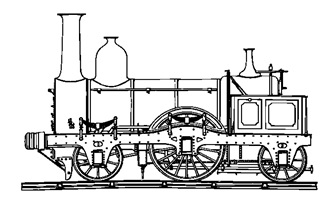
Machinery is a general term for machines and institutions. All kinds of machinery are movable devices used to transmit and transform movement and force. The development history of the world's machinery is the history of human beings surpassing themselves and exploring the unknown field.
The development history of world machinery can be divided into two stages:
(1) From the emergence of urban civilization in 7000 BC to the end of the seventeenth century, it was the origin of machinery and the development stage of ancient machinery
(2) From the eighteenth century to the present is the development stage of modern machinery
1. Mechanical origin and development stage of ancient machinery
In 7000 BC, the Jericho region was established in the Palestinian area by Jews. Urban civilization first appeared on the earth. The earliest machinery, the wheel, is one of the important inventions of mankind. One of the seven wonders of the world today, the pyramids in Egypt, was slowly built from the tools for carrying heavy objects invented by the Egyptian Badari who entered the Bronze Age.
2. The development stage of modern machinery
In the early twentieth century, a worker in the American Filadelphi Machinery Factory named Taylor, after studying working hours, improved the lathe invented by Seitz and invented high-speed steel, which greatly provided the metal cutting speed. Under the study of management mode, machinery manufacturing began to move towards automation. For example, the hydraulic surface grinder manufactured by Cincinnati is a system with automatic circulation, while at the mill in Milwaukee, the drilling machine was automated and the components The installation or translation, the rotation and feed of the drill, the movement of the worktable, etc. are all carried out automatically.
With the development of electronic technology, the degree of automation of machinery is getting higher and higher. In 1952, Parsons Corporation of America manufactured the first digital control machine tool. In 1962, the US Bendi Ke company first achieved the best adaptive control on the CNC milling machine. In 1967, the American Fox first proposed the concept of optimization. According to the basic concept of the flexible manufacturing system proposed by Williamson, the British Molins Company developed "System 24." In 1976, Japan's FANUC exhibited for the first time a flexible manufacturing unit composed of 4 machining centers and 1 industrial robot. During this period, the most important invention was undoubtedly the computer. The emergence of the computer and its use in production have increased the efficiency and accuracy of machinery production to an unprecedented level.
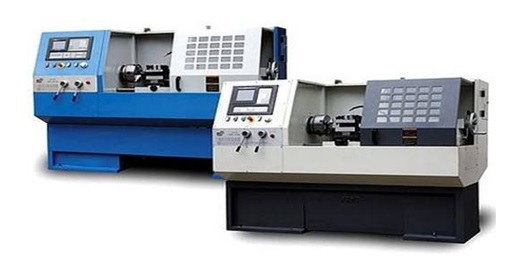
The definition of machinery
Machinery, derived from the Greek Mechine and the Latin Machina, mechanical gear originally refers to "ingenious design". The characteristics of machinery are: machinery is a combination of artificial physical components. There is a definite relative movement between the parts of the machine. So the machine can convert mechanical energy or complete useful mechanical work
Development history of machine tools
In the prototype of the machine tool of the fifteenth century, due to the need to manufacture watches and weapons, there were thread lathes and gear processing machines for watchmakers, and hydraulically driven barrel boring machines. Around 1501, the Italian Leonardo da Vinci had drawn sketches of lathes, boring machines, threading machines and internal grinders. Among them were new mechanisms such as cranks, flywheels, centers and bearings. The industrial revolution of the eighteenth century promoted the development of machine tools. In 1774, the British Wilkinson (full name John Wilkinson) invented a more precise barrel boring machine. The following year, he used the cylinder bored by this barrel boring machine to meet the requirements of the Watt steam engine. In order to boring larger cylinders, he built a water wheel driven cylinder boring machine in 1775, which promoted the development of steam engines. Since then, the machine tool has been driven by a steam engine through a crankshaft.
In 1797, the lathe made by the British Mozley was driven by a screw, which can realize motorized feed and thread cutting. This is a major change in the structure of the machine tool. Mozley is therefore known as "the father of the British machine tool industry".
In the 19th century, due to the promotion of textile, power, transportation machinery and arms production, various types of machine tools appeared one after another. In 1817, the British Roberts created a gantry planer; in 1818, American Whitney (full name Eli Whitney) made a horizontal milling machine; in 1876, the United States made a universal cylindrical grinder; in 1835 and 1897, they successively Invented gear hobbing machine and gear shaping machine.
The center of industrial technology development has quietly moved from Britain to the United States since the nineteenth century. Whitney Engineering Company developed a turret-type hexagon lathe as early as the 1840s. In this type of lathe, a winch is installed, and various required tools are installed on the winch, so that by rotating the turret of the fixed tool, the tool can be turned to the desired position.
With the invention of the electric motor, the machine tool began to use the electric motor centralized drive, and then widely used a separate electric motor drive. In the early twentieth century, in order to process higher precision workpieces, fixtures and thread processing tools, coordinate boring machines and thread grinding machines were created in succession. At the same time, in order to meet the needs of mass production in industries such as automobiles and bearings, various automatic machine tools, profiling machine tools, modular machine tools and automatic production lines have been developed.
Due to the requirements of the production of automobiles, aircrafts and their engines, in the mass processing of parts with complex shapes, high precision and high finish, there is an urgent need for precise and automatic milling and grinding machines. Due to the advent of multi-helical cutters, the vibration and smoothness of single-edged cutters are basically solved, which makes it difficult for milling machines to develop, making milling machines an important equipment for processing complex parts. Ford, known as the “father of cars”, proposed that cars should be “lightweight, strong, reliable and cheap”. In order to achieve this goal, it is necessary to develop a high-efficiency grinding machine. For this reason, American Norton used emery and corundum in 1900 to make a large and wide grinding wheel, as well as a heavy and strong heavy-duty grinding machine. The development of the grinder has brought the machinery manufacturing technology into a new stage of precision.
Entered the semi-automatic period in 1920. In the 30 years after 1920, machinery manufacturing technology has entered a semi-automated period, and hydraulic and electrical components have gradually been applied to machine tools and other machinery. In 1938, the hydraulic system and electromagnetic control not only promoted the invention of the new milling machine, but also promoted the use of machine tools such as gantry planers. After the 1930s, the travel switch-solenoid valve system was almost used in automatic control of various machine tools.
In 1950, it entered the period of automation. After the Second World War, due to the emergence of CNC and group control machine tools and automatic lines, the development of machine tools began to enter the period of automation. After the invention of the electronic computer, the numerical control machine tool uses the principle of digital control to store the processing procedures, requirements and operation numbers and text codes of the tool replacement as information, and controls the machine tool according to the instructions issued by it to process according to the established requirements. New machine tools.
The world's first CNC machine tool (milling machine) was born in 1951. The plan of the CNC machine tool was proposed to the US Air Force when Parsons of the United States developed the blade processing machine for checking the profile of the propeller blade profile of the aircraft. In 1951, the first prototype of a CNC tube machine tool was formally manufactured, which successfully solved the automation of the processing of complex parts with many varieties and small batches. Later, on the one hand, the principle of numerical control was extended from milling machines to milling and boring machines, drilling machines, and lathes. On the other hand, the transition from electronic tubes to transistors and integrated circuits. In 1958, the United States developed a machining center that can automatically change tools for multi-process machining.
The world's first CNC production line was born in 1968. The British Maolins Machinery Company developed the first automatic line composed of CNC machine tools. Soon, the American General Electric Company proposed "the prerequisite for factory automation is the numerical control of the part processing process and the program control of the production process". As a result, by the mid-1970s, an automated workshop had appeared, and an automated factory had also begun construction. From 1970 to 1974, because small computers were widely used in machine tool control, three technological breakthroughs occurred. The first is a direct digital controller, which enables a small electronic computer to control multiple machine tools at the same time; the second is computer-aided design, which uses a light pen to design and modify the design and calculation program; the third is according to the actual processing The situation and unexpected change feedback and automatically change the processing amount and cutting speed, the emergence of adaptive control system of machine tools.
After more than 100 years of development, the machine tool family has gradually matured and has truly become a "working machine" in the field of machinery.
According to the machine tool model compilation method, machine tools are divided into 11 categories: lathes, drilling machines, boring machines, grinders, gear processing machine tools, thread processing machine tools, milling machines, planing machines, broaching machines, sawing machines and other machine tools.
1. Lathe
Lathes are machine tools that use turning tools to turn rotating workpieces. On the lathe, the drill, reamer, reamer, tap, die and knurling tool can also be used for corresponding processing. Lathes are mainly used for processing shafts, disks, sleeves and other workpieces with rotating surfaces. They are the most widely used machine tools in machinery manufacturing and repair factories.
1.1 Lathes are divided into various types according to their uses and functions
Ordinary lathes have a wide range of processing objects, a large adjustment range of spindle speed and feed, and can process the internal and external surfaces, end surfaces and internal and external threads of the workpiece. This kind of lathe is mainly operated by workers manually, and the production efficiency is low. It is suitable for single parts, small batch production and repair workshops.
The turret lathe and rotary lathe have a turret tool holder or a revolver tool holder that can hold multiple tools, which can be used by workers to complete a variety of processes using different tools in one clamping of the workpiece, which is suitable for batch production.
The automatic lathe can automatically complete the multi-process processing of small and medium-sized workpieces according to a certain program. It can automatically load and unload and repeatedly process a batch of the same workpieces. It is suitable for large-scale and mass production.
Multi-blade semi-automatic lathes are divided into single-axis, multi-axis, horizontal and vertical. The layout of the single-axis horizontal type is similar to that of ordinary lathes, but the two sets of tool holders are installed in front, back, or up and down of the main shaft, and are used to process disks, rings, and shafts.
The copy lathe can automatically complete the processing cycle of the workpiece according to the shape and size of the template or sample. It is suitable for small batch and batch production of more complex workpieces. The productivity is 10 to 15 times higher than that of the ordinary lathe. There are multi-tool holder, multi-axis, chuck type, vertical and other types.
The main axis of the vertical lathe is perpendicular to the horizontal plane, the workpiece is clamped on a horizontal rotary table, and the tool holder moves on the beam or column. It is suitable for processing larger, heavier workpieces that are difficult to install on ordinary lathes, generally divided into two categories: single column and double column.
When the shovel-tooth lathe is turning, the tool holder periodically reciprocates in a radial direction, which is used to form the tooth surface of the shovel milling cutter and hob. Usually with a shovel attachment, a small grinding wheel driven by a separate motor shovels the tooth surface.
Special lathes are lathes used to process specific surfaces of certain types of workpieces, such as crankshaft lathes, camshaft lathes, wheel lathes, axle lathes, roll lathes, and steel ingot lathes.
The combined lathe is mainly used for turning, but after adding some special parts and accessories, it can also be processed by boring, milling, drilling, inserting, grinding, etc. It has the characteristics of "one machine with multiple functions" and is suitable for engineering vehicles, ships or mobile Repair work at the repair station.
2. Boring machine
The first real boring machine in the world was invented by Wilkinson in 1775. In fact, to be precise, Wilkinson's boring machine is a drilling machine capable of precisely processing cannons. It is a hollow cylindrical boring bar with both ends mounted on bearings.
3. Milling machine
As early as 1664, British scientist Hook relied on a rotating circular tool to create a machine for cutting. This could be regarded as the original milling machine, but then there was no enthusiastic response from the society. In the 1840s, Pratt designed the so-called Lincoln milling machine. Of course, it is American Whitney who really establishes the status of milling machines in machine manufacturing.
In 1862, Brown of the United States produced the world's earliest universal milling machine. This milling machine is an epoch-making initiative in the preparation of universal indexing disks and comprehensive milling cutters. The worktable of the universal milling machine can rotate a certain angle in the horizontal direction, and is equipped with accessories such as a vertical milling head.
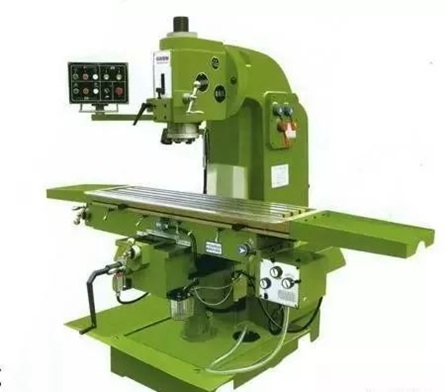
4. Planer
Longmen planer for processing large planes (1839) Due to the need for plane machining of steam engine valve seats, many technicians have begun research in this area since the early 19th century. Among them are Richard Robert, Richard Prater, James Fox and Joseph Clement, etc., they have independently produced a gantry planer in 18 years, within 25 years. By 1839, a British man named Bodmer finally designed a gantry planer with a knife-feeding device.
Bullhead planer for processing facets Another British man, Smith, invented and manufactured a bullface planer for machining facets in 40 years from 1831. It can fix the processed objects on the bed, and the tool makes a reciprocating movement.
Longmen planer for processing large planes (1839) Due to the need for plane machining of steam engine valve seats, many technicians have begun research in this area since the early 19th century. Among them are Richard Robert, Richard Prater, James Fox and Joseph Clement, etc., they have independently produced a gantry planer in 18 years, within 25 years. By 1839, a British man named Bodmer finally designed a gantry planer with a knife-feeding device.
Bullhead planer for processing facets Another British man, Smith, invented and manufactured a bullface planer for machining facets in 40 years from 1831. It can fix the processed objects on the bed, and the tool makes a reciprocating movement.
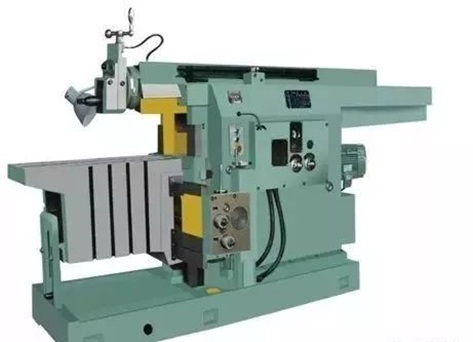
5.Grinding Machine
In 1864, the United States made the world's first grinder, which was equipped with a grinding wheel on the lathe tool holder of the lathe and made it a device for automatic transmission. After 12 years, Brown of the United States invented a universal grinding machine close to a modern grinding machine.
In the future, due to the further improvement of the bearings and guide rails, the accuracy of the grinding machines has become higher and higher, and the direction of specialization has developed. Internal cylindrical grinding machines, surface grinding machines, roller grinding machines, gear grinding machines, universal grinding machines, etc. have emerged.
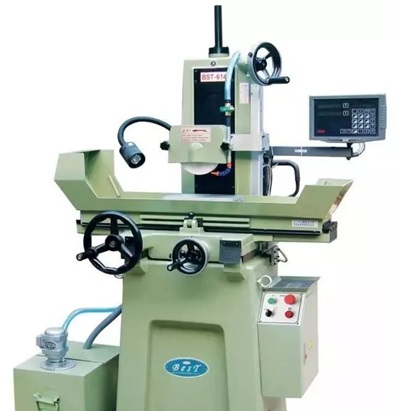
6. drilling machine
Around 1850, the German Martignioni first made twist drills for metal drilling; at the International Fair held in London, England in 1862, the British Whitworth exhibited a power-driven cast iron cabinet The drilling machine, which became the prototype of modern drilling machine.
Later, various drilling machines appeared one after another, including rocker drilling machines, drilling machines equipped with automatic feed mechanism, and multi-axis drilling machines capable of punching multiple holes at once. Due to the improvement of tool materials and drill bits, and the use of electric motors, large-scale high-performance drilling machines were finally manufactured.
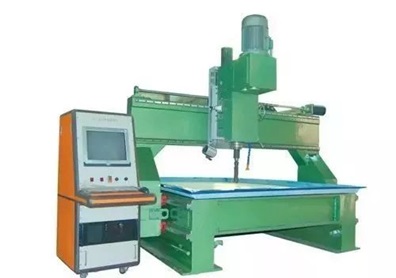
Summary, this article introduce the history of machinery and cnc machine.


